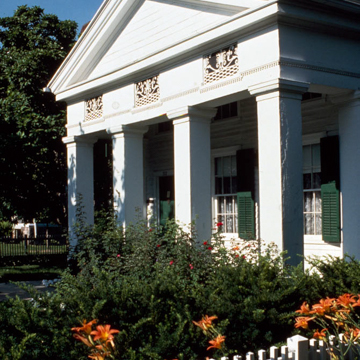You are here
Kempf House Museum (Reuben and Pauline Widenmann Kempf House/Henry DeWitt Bennett House)
The diminutive one-and-a-half-story wood temple-form house is an embodiment of the simplicity of the Greek Revival style. The four sturdy rectangular piers are a distillation of the supremely sophisticated Doric column; three large, cast-iron grilles with an anthemion motif pose as metopes in the frieze but actually screen the windows of the upper story, which is tucked beneath the gable roof. Henry DeWitt Bennett, who was secretary and steward of the University of Michigan from 1869 to 1883, built the house. It was purchased in 1890 by Reuben H. and Pauline Widenmann Kempf, two classically trained music instructors. Reuben Kempf (1859–1945) organized and directed concert series to attract talented artists to the university; his wife, Pauline Widenmann Kempf (1860–1953), taught voice.
Writing Credits
If SAH Archipedia has been useful to you, please consider supporting it.
SAH Archipedia tells the story of the United States through its buildings, landscapes, and cities. This freely available resource empowers the public with authoritative knowledge that deepens their understanding and appreciation of the built environment. But the Society of Architectural Historians, which created SAH Archipedia with University of Virginia Press, needs your support to maintain the high-caliber research, writing, photography, cartography, editing, design, and programming that make SAH Archipedia a trusted online resource available to all who value the history of place, heritage tourism, and learning.


